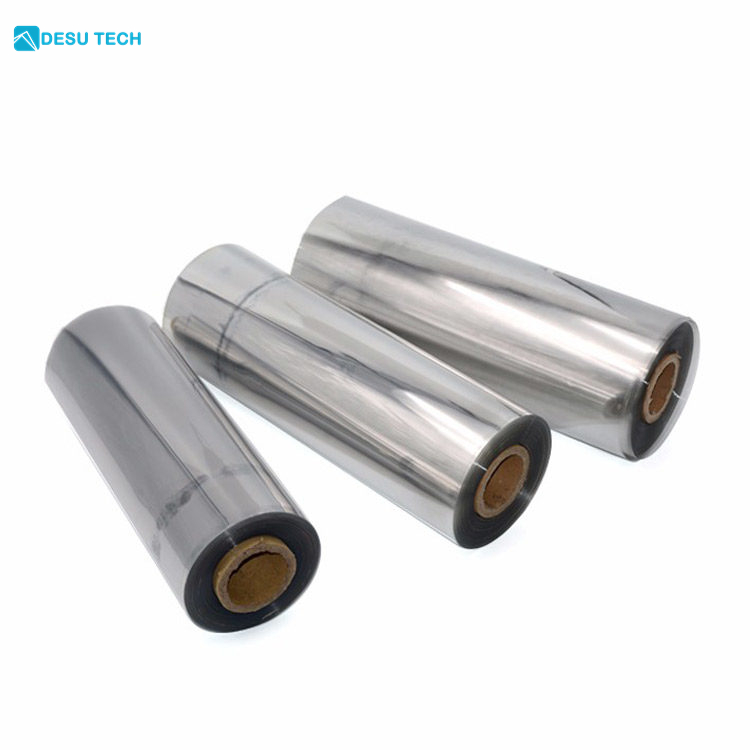Food grade plastic sheet roll is a plastic material specially designed for contact with food and is usually supplied in roll form. This plastic material typically meets specific food safety standards and regulations to ensure that it does not release harmful substances or cause contamination of food when in contact with it.
Feature of food grade plastic sheet roll
These food-grade plastic sheet rolls are widely used in food packaging, food processing, food storage and other fields. They usually have the following characteristics:
1. Food safety: Comply with relevant food contact material standards to ensure that it will not cause harm to human health when in contact with food.
2.Heat resistance: Able to withstand heating within a certain temperature range, suitable for high-temperature environments such as cooking and processing.
3. Chemical stability: Will not react chemically with or dissolve food, ensuring it will not contaminate food or change its taste.
4. Transparency: It has good transparency so that the packaged food can be clearly seen.
5. Mechanical properties: It has sufficient strength and toughness to adapt to the requirements of packaging, transportation, storage and other links.
Common food grade plastic sheet roll materials
Food-grade plastic sheet rolls refer to plastic films or sheets that meet food contact safety standards and are usually supplied in roll form. These sheet rolls are usually used in food packaging, food processing, food storage and other fields to ensure that food is not contaminated or harmful substances are released when it comes into contact with plastics. The following are some of our common food grade plastic sheet rolls:
1. PET Plastic Sheet Rolls(Polyethylene Terephthalate Plastic Film Rolls).
2.PP Plastic Sheet Rolls (Polypropylene Plastic Sheet Rolls).
3.HIPS Plastic Sheet Rolls (High Impact Polystyrene Plastic Sheet Rolls).



How to pick food grade plastic sheet roll?
When selecting a food-grade plastic sheet roll, there are several factors to consider to ensure safety and suitability for your specific application:
1. Certification: Look for certifications from reputable organizations such as the FDA (in the United States), EFSA (in the European Union), or other relevant regulatory bodies. Ensure that the plastic sheet roll complies with food contact safety standards.
2. Material Type: Identify the type of plastic material suitable for your needs. Common food-grade plastic materials include polyethylene (PE), polypropylene (PP), polystyrene (PS), High impact polystyrene(HIPS), polyethylene terephthalate (PET), and others. Choose a material that is compatible with the type of food or beverage it will come into contact with.
3. Thickness and Strength: Consider the thickness and strength of the plastic sheet roll. Thicker sheets may provide better durability and resistance to tearing or puncturing, especially for heavy-duty applications.
4. Transparency: If transparency is important for your application (such as in packaging), choose a plastic sheet roll with high clarity and transparency to showcase the contents effectively.
5. Temperature Resistance: Ensure that the plastic material can withstand the temperature conditions it will be exposed to during food processing, storage, or transportation. Some applications may require high-temperature resistance, while others may require low-temperature flexibility.
6. Chemical Resistance: Verify that the plastic sheet roll is resistant to chemicals commonly found in food products, cleaning agents, or sanitizers to prevent degradation or contamination.
7. Odor and Taste Neutral: Choose a plastic material that is odorless and tasteless to prevent any undesirable transfer of flavors or odors to the food.
8. Recyclability: Consider the environmental impact of the plastic material and choose recyclable or biodegradable options if possible to minimize waste.
9. Supplier Reputation: Select a reputable supplier with a track record of providing high-quality food-grade plastic materials and excellent customer service.
